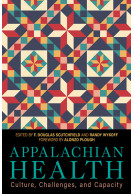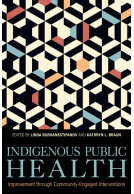Indigenous Public Health (Hardback)
Improvement through Community-Engaged Interventions
Imprint: University Press of Kentucky
Series: Understanding and Improving Health for Minority and Disadvantaged Populations
Pages: 266
Illustrations: 4 maps, 11 tables, 4 b&w illustrations
ISBN: 9780813195841
Published: 27th September 2022
Script Academic & Professional
Series: Understanding and Improving Health for Minority and Disadvantaged Populations
Pages: 266
Illustrations: 4 maps, 11 tables, 4 b&w illustrations
ISBN: 9780813195841
Published: 27th September 2022
Script Academic & Professional
You'll be £40.00 closer to your next £10.00 credit when you purchase Indigenous Public Health. What's this?
+£4.99 UK Delivery or free UK delivery if order is over £40
(click here for international delivery rates)
Need a currency converter? Check XE.com for live rates
(click here for international delivery rates)
Need a currency converter? Check XE.com for live rates
The World Health Organization (WHO) defines social determinants of health as "the conditions in which people are born, grow, live, work and age" and "the fundamental drivers of these conditions." Income, education, job security, food and housing, as well as gender and race are all examples of social determinants of health. These factors influence the health and wellbeing of patients, as well as how they interact with and receive healthcare. Unfortunately for some communities, many of these key factors to health are often jeopardized. Indigenous groups in North America and US associated Pacific jurisdictions have historically had troubled relationships with the federal government, experiencing occupation and forced relocation, mandated boarding schools, and attempts to eliminate cultural strengths and resources These denigrating experiences have marginalized these indigenous populations and increased their risk of poverty, food and housing insecurity, poor health, and limited access to healthcare.
Indigenous Public Health: Improvement through Community-Engaged Interventions illustrates how successful community engagement strategies, programs, and resources within indigenous communities have resulted in diverse, successful public health programs, and helped community members overcome barriers to health. Editors Linda Burhansstipanov and Kathryn L. Braun explore the problems that impact engagement efforts, such as racism or resilience, and also discuss public health topics, such as infectious diseases, cancer, diabetes, and cardiovascular disease. The overarching focus of this book is to acknowledge and honor the strengths of different communities and emphasize that community collaboration and the sharing of resources can only improve the lives of all communities.
Other titles in the series...
Other titles in University Press of Kentucky...

















